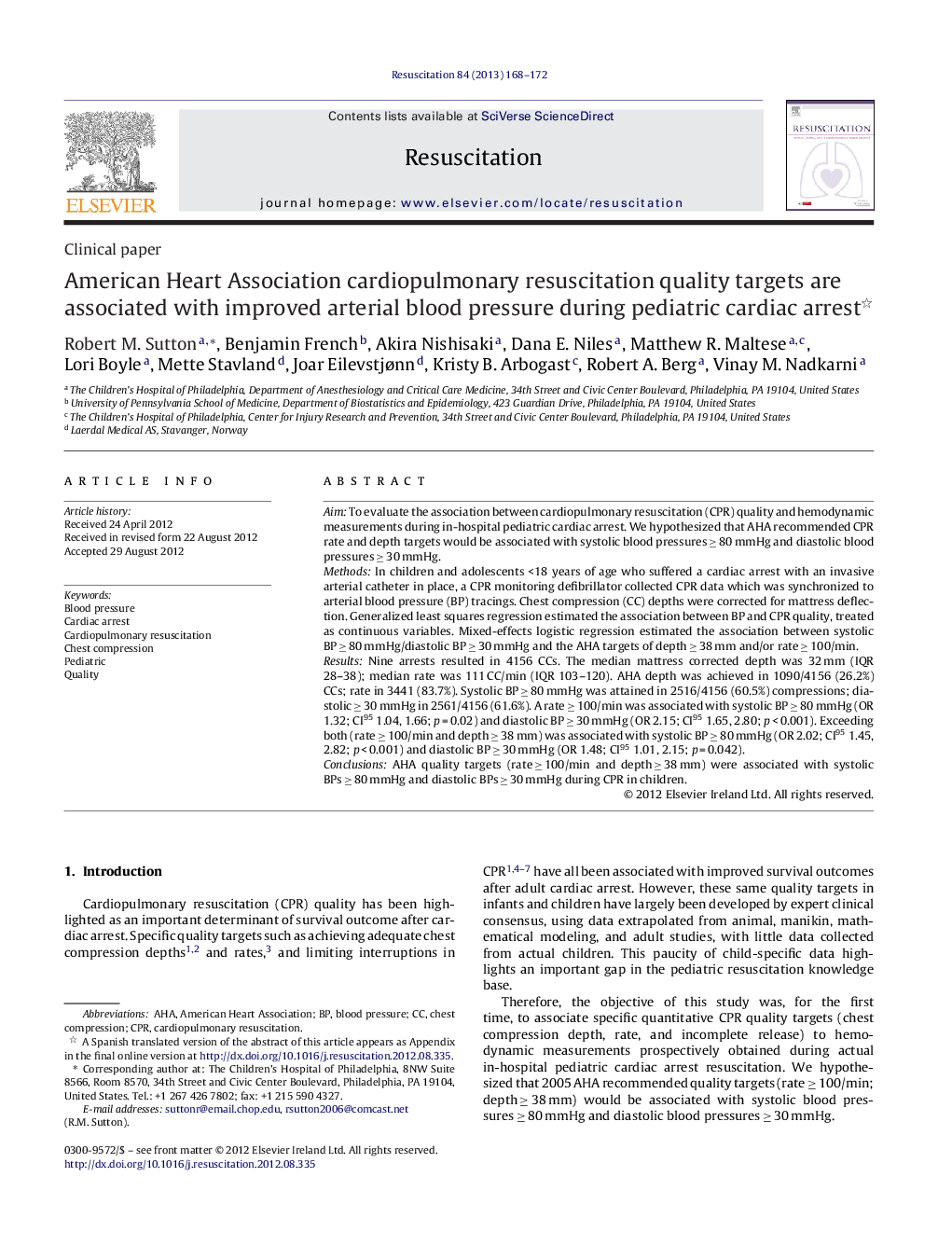| Article ID | Journal | Published Year | Pages | File Type |
|---|---|---|---|---|
| 3008321 | Resuscitation | 2013 | 5 Pages |
AimTo evaluate the association between cardiopulmonary resuscitation (CPR) quality and hemodynamic measurements during in-hospital pediatric cardiac arrest. We hypothesized that AHA recommended CPR rate and depth targets would be associated with systolic blood pressures ≥ 80 mmHg and diastolic blood pressures ≥ 30 mmHg.MethodsIn children and adolescents <18 years of age who suffered a cardiac arrest with an invasive arterial catheter in place, a CPR monitoring defibrillator collected CPR data which was synchronized to arterial blood pressure (BP) tracings. Chest compression (CC) depths were corrected for mattress deflection. Generalized least squares regression estimated the association between BP and CPR quality, treated as continuous variables. Mixed-effects logistic regression estimated the association between systolic BP ≥ 80 mmHg/diastolic BP ≥ 30 mmHg and the AHA targets of depth ≥ 38 mm and/or rate ≥ 100/min.ResultsNine arrests resulted in 4156 CCs. The median mattress corrected depth was 32 mm (IQR 28–38); median rate was 111 CC/min (IQR 103–120). AHA depth was achieved in 1090/4156 (26.2%) CCs; rate in 3441 (83.7%). Systolic BP ≥ 80 mmHg was attained in 2516/4156 (60.5%) compressions; diastolic ≥ 30 mmHg in 2561/4156 (61.6%). A rate ≥ 100/min was associated with systolic BP ≥ 80 mmHg (OR 1.32; CI95 1.04, 1.66; p = 0.02) and diastolic BP ≥ 30 mmHg (OR 2.15; CI95 1.65, 2.80; p < 0.001). Exceeding both (rate ≥ 100/min and depth ≥ 38 mm) was associated with systolic BP ≥ 80 mmHg (OR 2.02; CI95 1.45, 2.82; p < 0.001) and diastolic BP ≥ 30 mmHg (OR 1.48; CI95 1.01, 2.15; p = 0.042).ConclusionsAHA quality targets (rate ≥ 100/min and depth ≥ 38 mm) were associated with systolic BPs ≥ 80 mmHg and diastolic BPs ≥ 30 mmHg during CPR in children.
